Examine Industry-Specific Product Models
Learning Objectives
After completing this unit, you’ll be able to:
- Explain how product modeling in media, energy, and utilities differ from the communications industry.
- List the four Shared Information/Data (SID) specification types for catalog components that are unique to Communications cloud.
- Describe different mapping techniques in product modeling.
Industry Product Data Models
With several product-modeling patterns and combinations at his disposal, Devi’s feeling a bit overwhelmed by the whole process. He asks himself, Is it Friday yet? Luckily, he’s not the first to formulate a plan for his catalog data.
So far, we’ve focused on the communications industry. Next, you learn about the media and energy and utilities industries from a product-modeling perspective. Because each industry has unique challenges and considerations for product sales, different time-tested data frameworks have been developed over the years to meet specific business objectives for each industry. Let’s start with the communications industry and move on from there.
Communications Industry Product Models
Telemanagement Forum (TM Forum) is the leading association for communications service providers (CSPs) and their suppliers. Over time, through collaboration with members, TM Forum has established industry standards and guidelines, including best practices for data management and information frameworks.
One framework is the Shared Information/Data (SID) Model, also known as Open Digital Framework. It provides standard definitions for all information that passes through communications enterprises, like Infiwave. Salesforce Industries Communications Cloud aligns with SID and gives you the tools for working with this data model.
Use the SID model to simplify and streamline catalog and order management by organizing components into three layers.
- The Product Spec layer is a commercial view of what the business sells. It holds all the commercial products and their characteristics, pricing, promotions, and discounts.
- The Customer Facing Service Spec (CFSS) layer includes the technical products and services that support the decomposition and fulfillment of commercial products.
- The Resource Facing Service Spec (RFSS) layer contains the resources that support the CFSS layer.
In this diagram, a TV and internet product bundle contains internet and voice product specs. 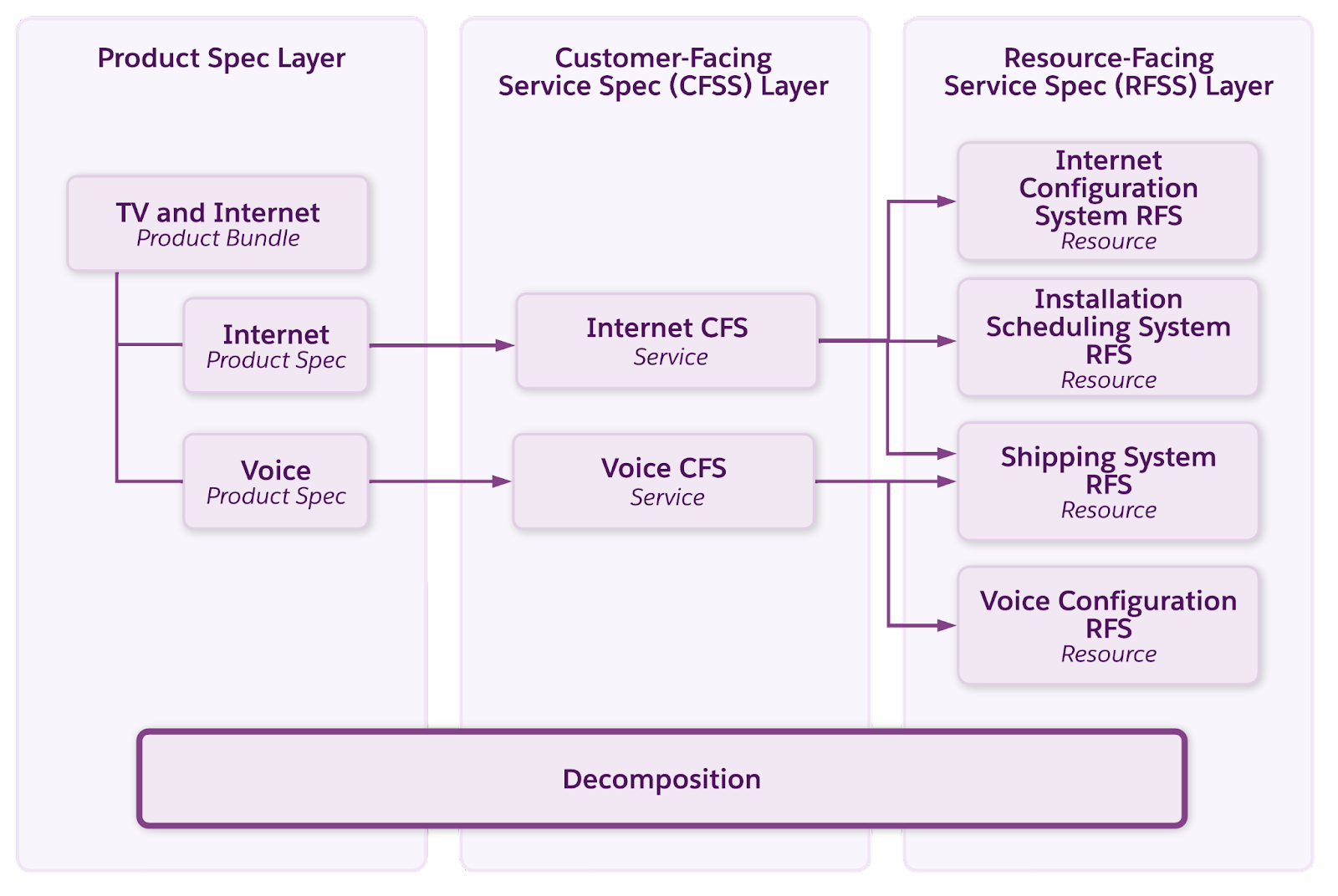
These product specs decompose into internet and voice services when a customer orders the bundle. Decomposition is another word for breaking something down into smaller parts. They translate into downstream resources, such as scheduling, shipping, and internet and voice resources that order-management systems use to fulfill orders.
Contained within these three layers are four key SID definitions for catalog components that are unique to communications products. You can use these components to identify and categorize catalog entities when developing your product model.
Let’s explore each SID specification type.
The TM Forum SID Product-Modeling Process
Let’s follow along as Devi uses the TM Forum SID product-modeling process to start building his product catalog.
- Complete discovery with stakeholders to collect requirements.
- Define a product-model legend.
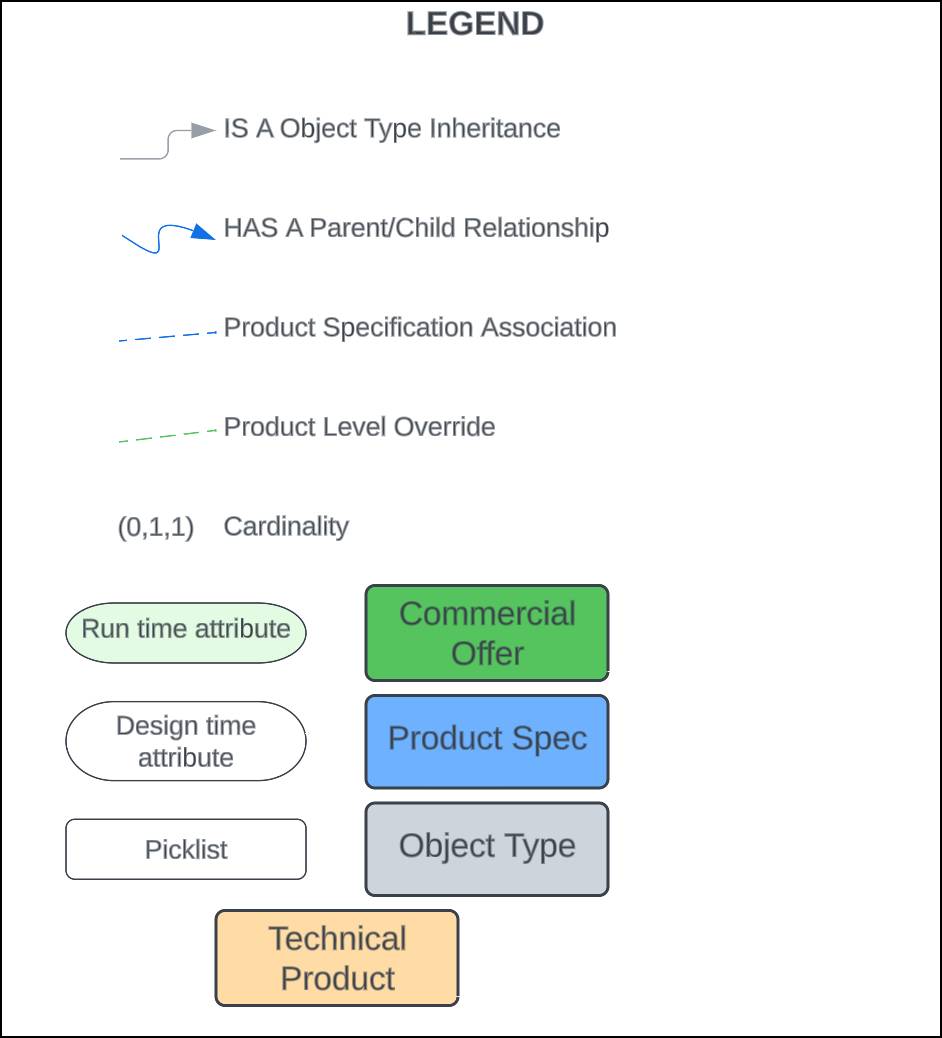
3. Map an offer to show a one-to-one relationship with its associated specification.
Here’s a phone offer connected to its product spec.

4. Map the phone model’s associated attributes.
Devi adds phone-specific attributes, such as Brand, Capacity, and Mobile OS, and their associated picklists to the object type. During development, the product spec inherits these attributes, and Devi assigns them product-specific values.
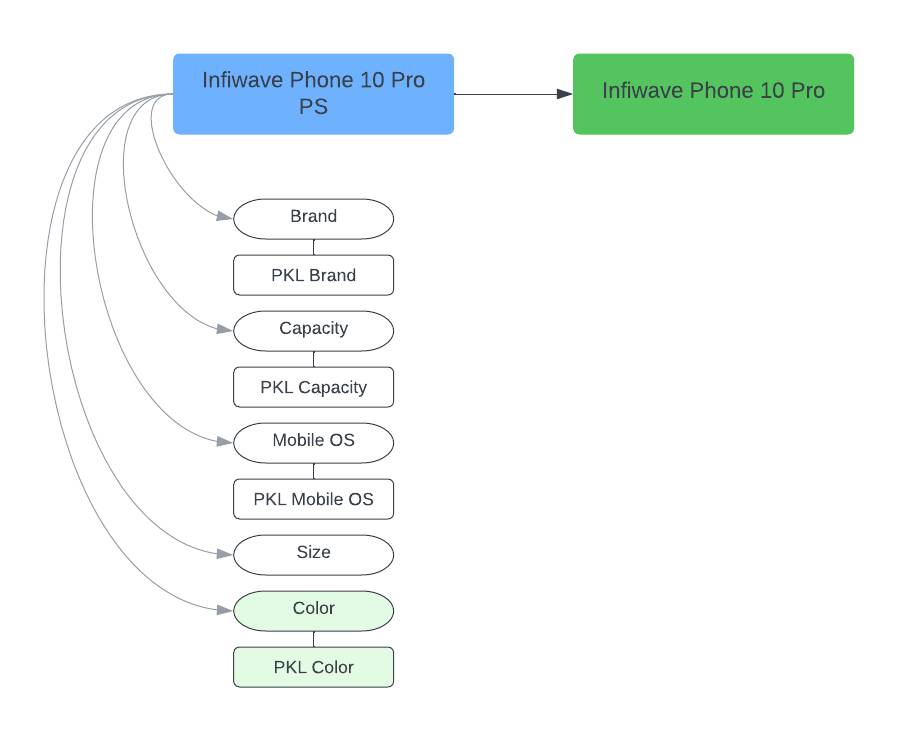
5. Map the backend technical products to the product spec to track decomposition relationships.
Devi adds the SIM Card technical product to the product spec. These technical aspects are hidden from customers in the Cart because they’re irrelevant to them.
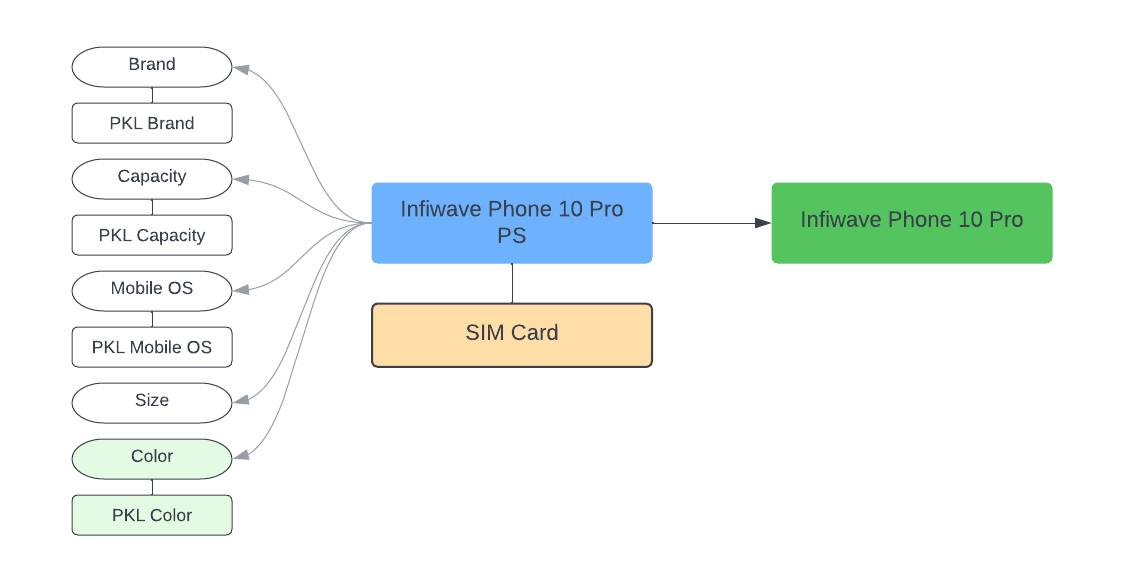
6. Repeat this process for each commercial product spec and offer, and then organize the offers into bundles.
As you can see, the model is growing!
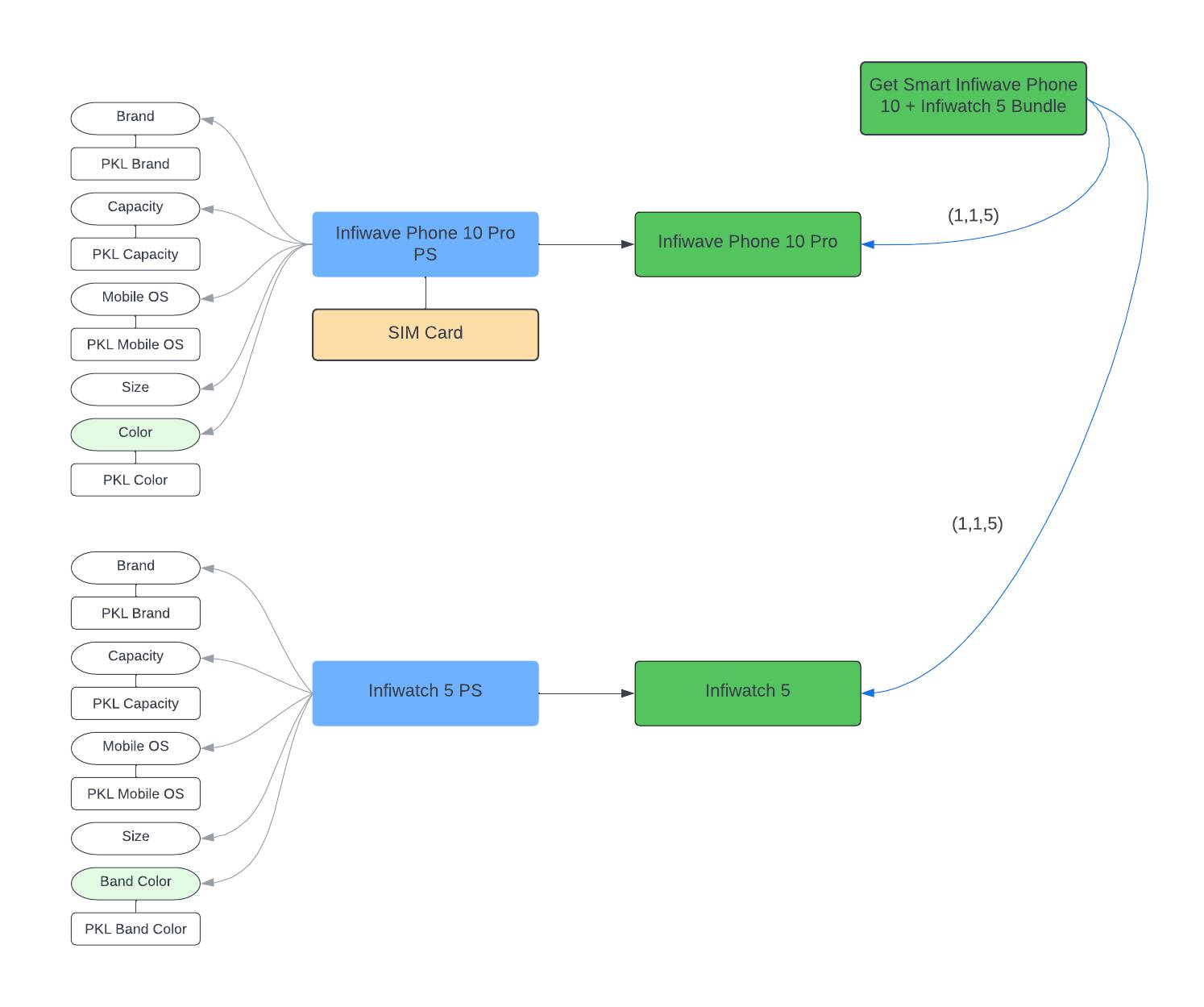
Devi groups the child products into a bundle product and assigns the cardinalities. The example bundle in the diagram contains phone and smartwatch child products and their minimum, default, and maximum quantities.
In the telecommunications industry, CSPs most often use a hierarchical modeling pattern like this one to support traditional IT systems. This way, they can create static and configurable bundles, kits, and feature choices.
7. Once all the bundles, products, resources, services, attributes, and picklists are mapped, formulate a set of object types and subtypes to maximize efficiency in building certain product lines.
Here, you can see that Devi adds an object type hierarchy with Device, Handset, and Smartwatch object types.
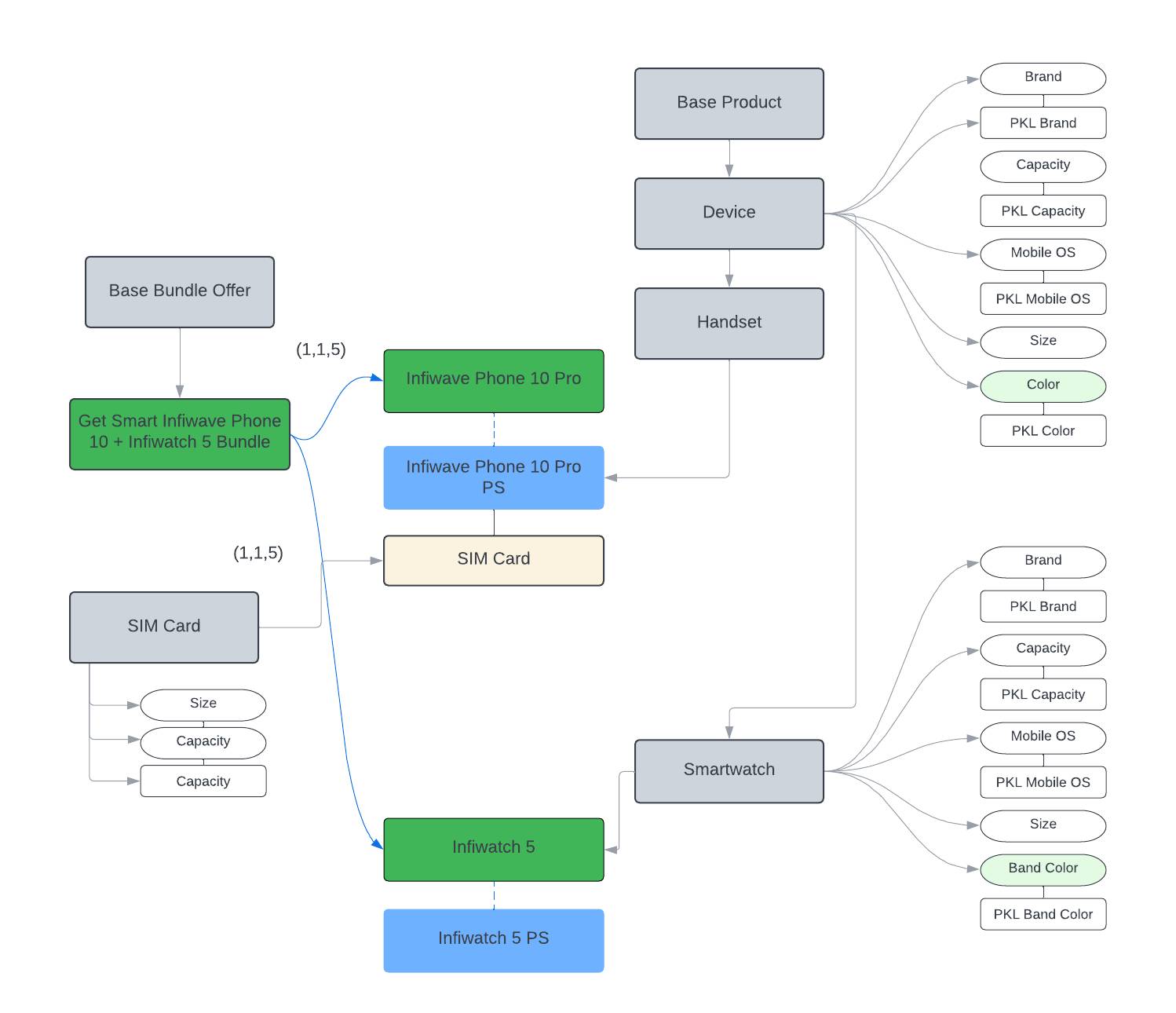
He then groups the attributes that each commercial and technical product should inherit from its respective object type.
Devi stands back and admires his shiny, new product-model diagram. A well thought-out product model will save him lots of time in the long run. By taking a few minutes to map out these entities, attributes, and object types, he has simplified his product design and maintenance going forward. With his product model in place, Devi has a crystal-clear plan for building offerings and components in Shared Catalog.
Media Industry Product Models
Next, let’s see how a product designer in the media industry might configure their company’s products. If you've completed The Media Industry Trailhead module, you'll know that the products and services fall into these categories:
- Devices, services, and infrastructure, such as access platforms, vision technologies, and streaming devices
- TV content packages and third-party applications
- Seasonal tickets and free vision
- Single events or video-on-demand (VOD)
- Additional fees
Each product category might employ one or more modeling patterns. Let’s look at an example.
Typically, a media broadcaster bundles a set of channels into a few primary entertainment packages based on market segments. When setting up these channels in Shared Catalog, architects can use a flat-pattern approach, in which each individual channel is its own standalone product. Then, when a channel is added to the Cart, the other packaged channels are automatically included using an auto-add rule.
Another option is to use a hierarchical pattern in which the parent product is the container for the bundle, as shown here.
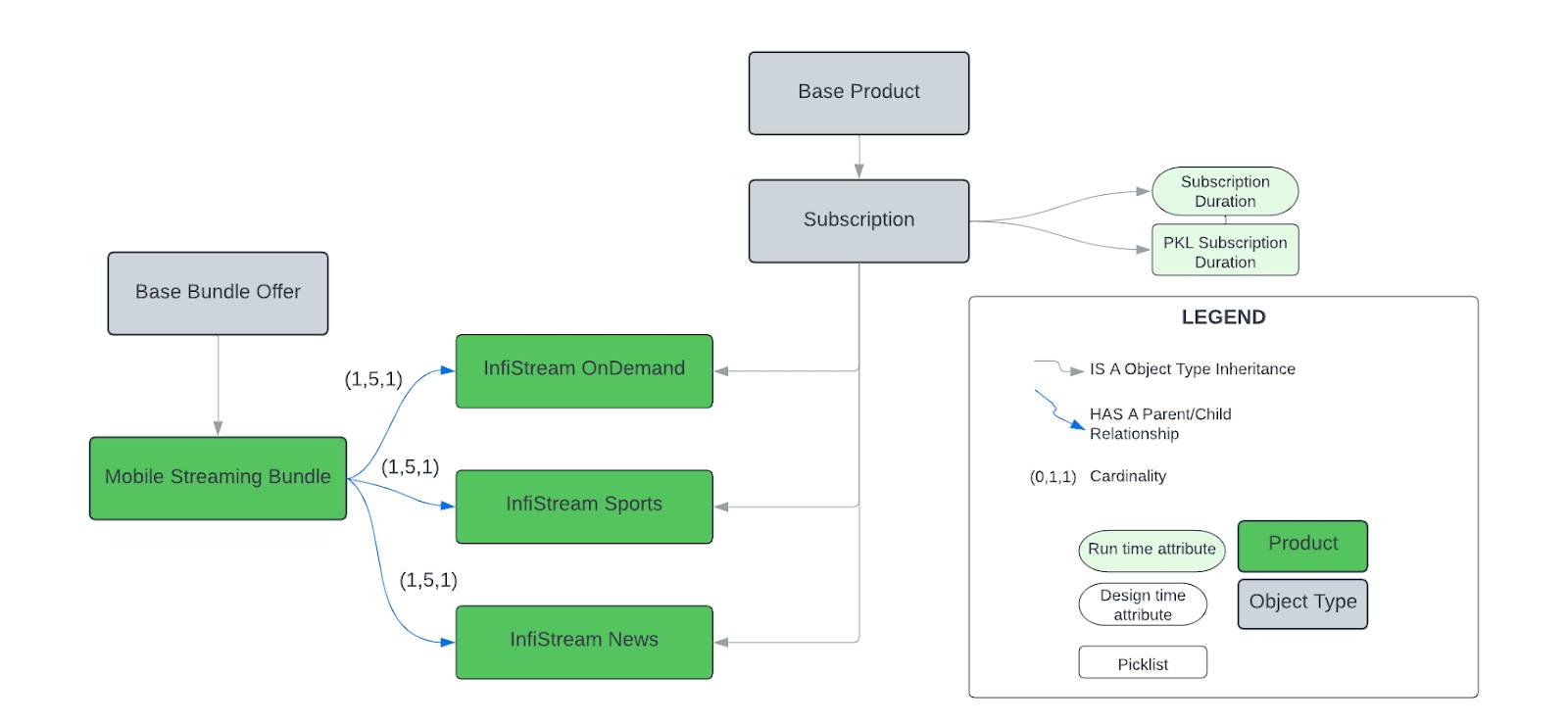
In the model, a parent product for a mobile streaming bundle contains child subscription products that inherit the metadata from a Subscription object type.
Let’s switch gears and visit another vibrant industry: energy and utilities.
Energy and Utilities Industry Product Models
If you've completed The Energy and Utilities Industries Trailhead module, you’ll recall that energy and utilities companies employ unit rates to track their customers’ usage of electricity, gas, and other commodities. These rates may fluctuate based on the time of day to encourage consumers to use less energy.
To account for this fluctuation, the product designer can create a unit rate parent product bundle with child products to store the distinct usage pricing during each time period. They can also design products for flat-rate standing charges that cover the cost of infrastructure, such as distribution networks, or they may include taxes as part of the offer for transparency.
In this diagram, the Fixed Energy product has three bundles that define its price: Unit Rate, Standing Charges, and Taxes and Contributions.

The Unit Rate product stores charges for different time periods, Standing Charges contains the provisioning and network charges, and a Taxes and Contributions product bundle tracks taxes and fees based on fuel, transmission, and consumption.
Model Away!
You’ve learned how the TM Forum SID product-modeling process works in communications, media, energy, and utilities industries. You’re now ready to build your own visual hierarchy that helps you use Shared Catalog to its fullest potential.
Next up, you learn how product lifespan plays an important factor in product modeling. You’ll also see how to use Industries Shared Catalog features to control iterative changes and plan out the lifecycle of your products.
